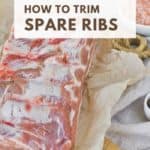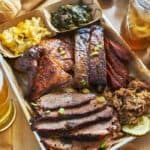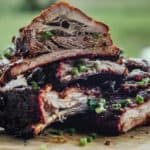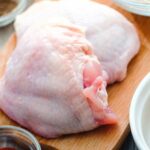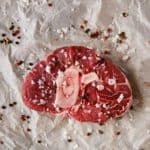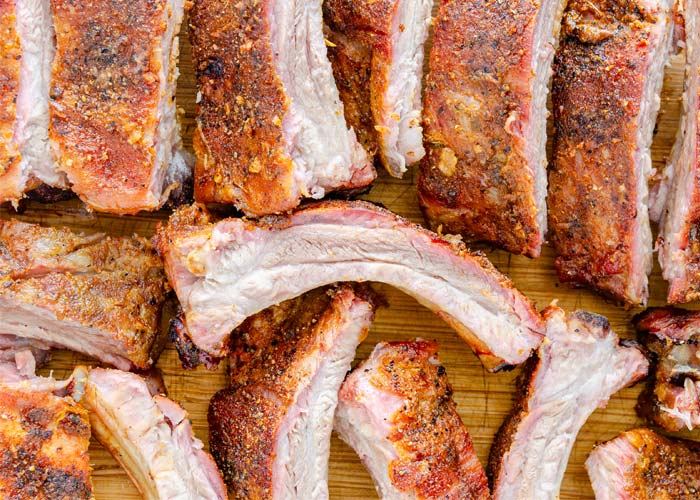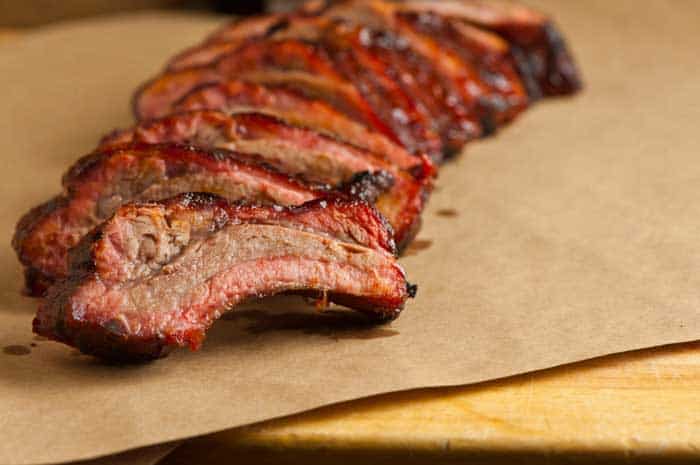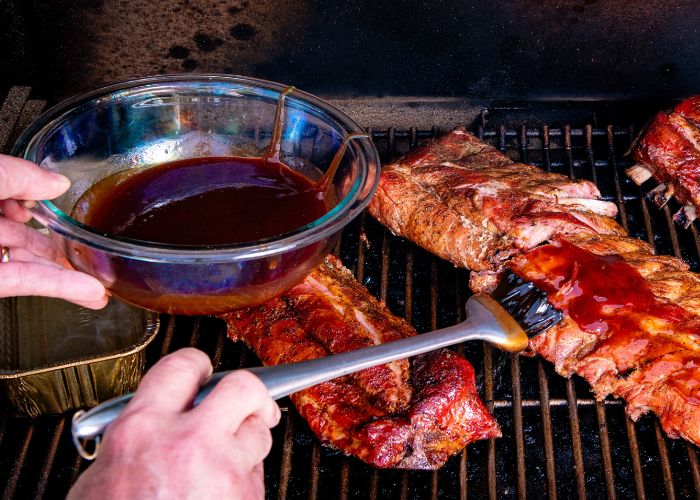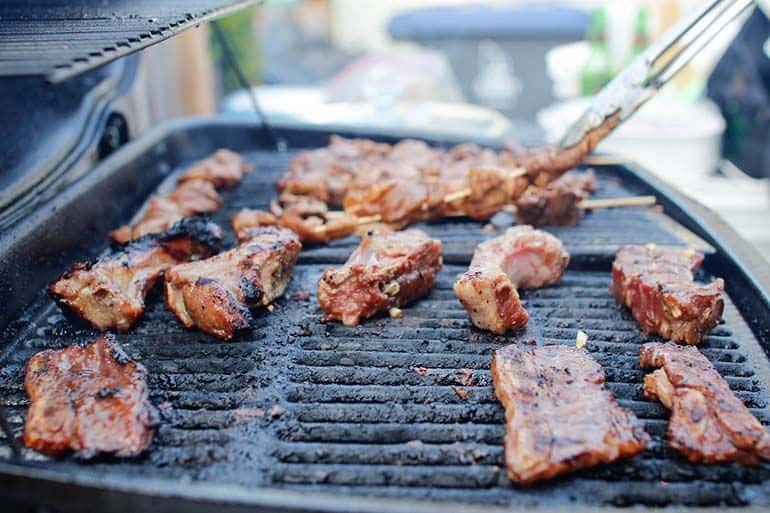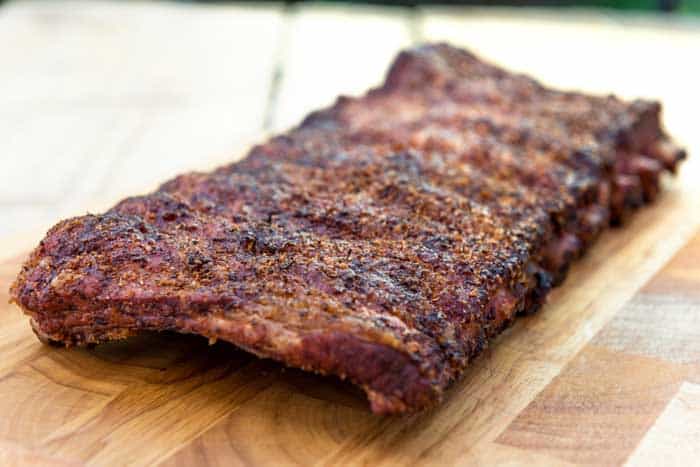Want to cook the perfect spare ribs? It all starts with the preparation. Here’s how to trim spare ribs the right way.
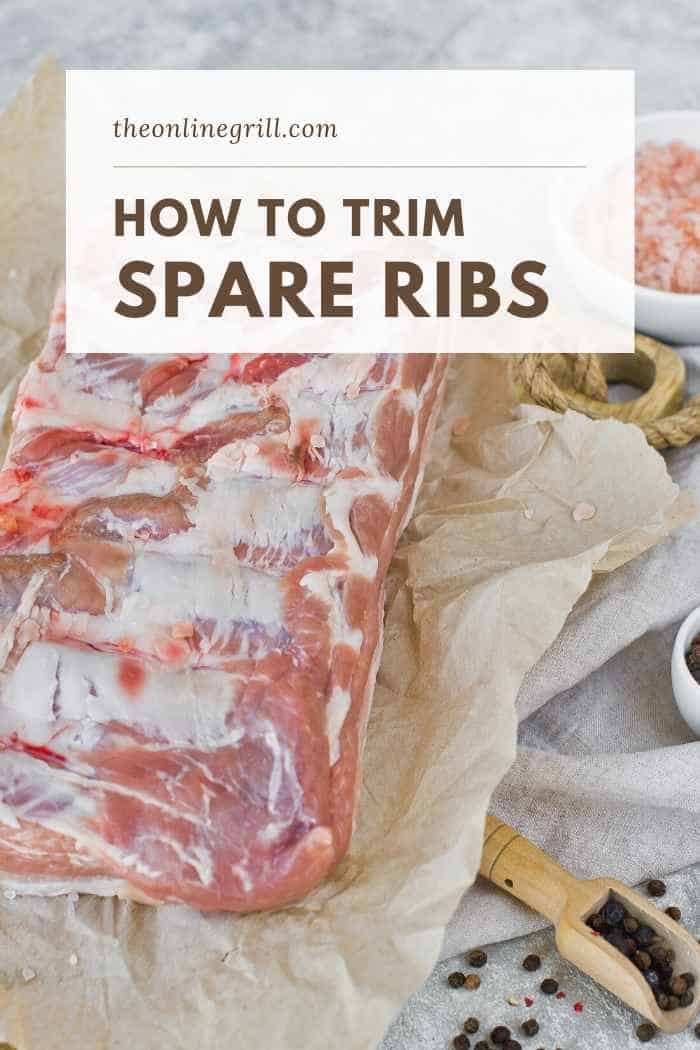
A good piece of barbecued meat can only be as good as your preparation, and this is more true with pork ribs than any other type of meat.
A properly trimmed rack of ribs will give you the exact flavors you want, and will cook beautifully evenly to give you prize-winning St Louis style ribs.
Why trim spare ribs?
Trimming ribs does a lot for presentation, but for me the real reason goes beyond just this.
A well trimmed rack of ribs will have the membrane, skirt, and sternum remove. All of these can contribute to disrupting the quality of your smoke.
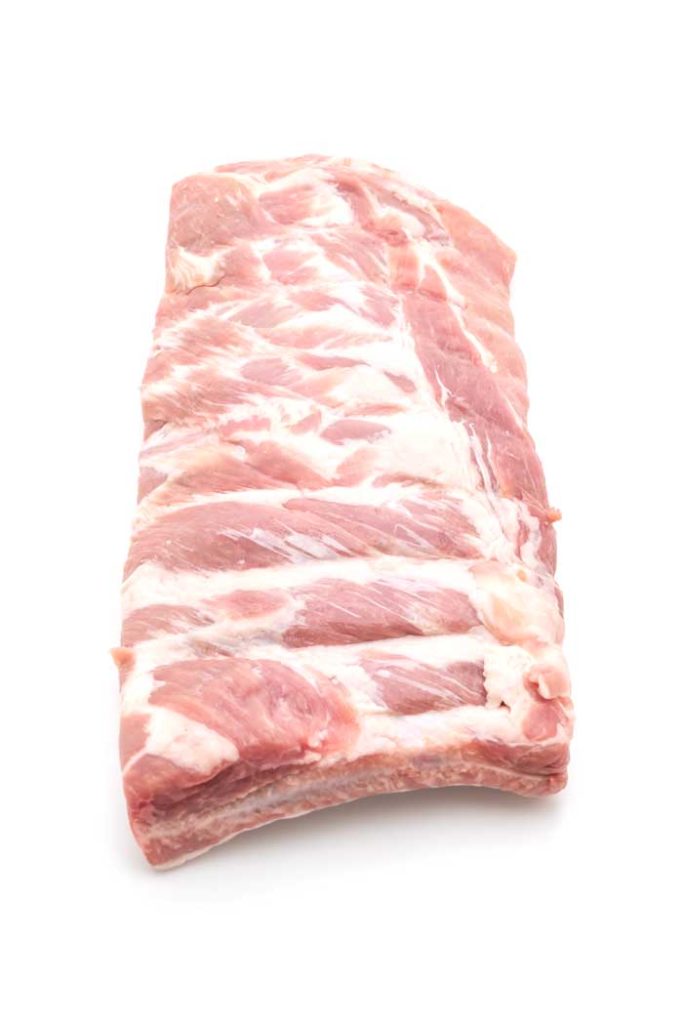
Membrane by its very definition protects the ribcage of the pig, so leaving it on can shield the ribs from the smoke working its way into the rib meat. It can also obstruct the rendered fat in the meat from working its way through the other areas of the flesh.
In the case of skirt, this leftover part of the diaphragm can almost double the thickness of the rib rack. Considering it’s not edible, it’s not worth the extra time keeping it would add to our cooking.
As for the sternum, it’s a thick part of cartilage and connective tissue that we don’t need. Because it’s a very different texture to the main rack, it would require a different cooking approach.
Anatomy of whole spare rib
Let’s get into the different parts of the rib, and how the best way to remove them.
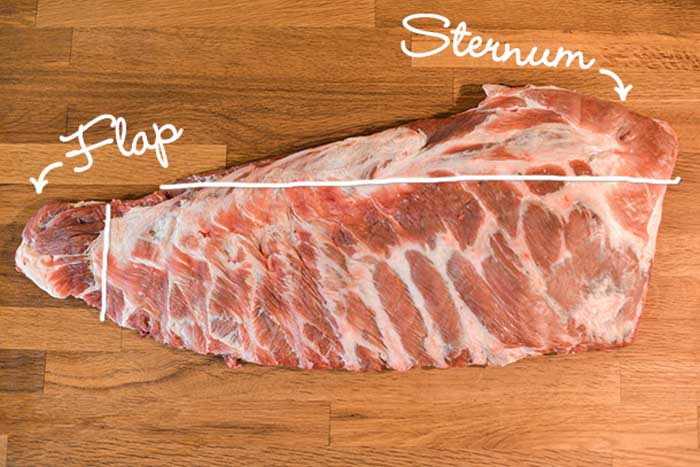
The key to trimming spare ribs properly is getting to grip with all the parts that make up the rack. A rack of spare ribs is made up of more than just the ribs, but a number of other parts that you’ll need to know in order to be able to cut them.
A full spare rib rack is comprised of these four parts:
- The sternum
- The rib tips
- The membrane
- The skirt
- The flap
Let’s take a deeper look at each of these.
The skirt
Also called skirt meat, the skirt is leftover from the diaphragm and is a flap-like part of meat that sits around the middle of the back side of the rack.
The rib tips and sternum
Often found with some belly meat on them, the ribs tips lie on the edge of the length of the rack. The tips contain a cartilage and part of the sternum. This difference in texture and consistency means that it cooks differently to the main part of the rib, so it needs to be trimmed off.
The membrane
Also sometimes called ‘the fell’, the membrane is the thin layer of white skin that sits on top of the main rib area. There is often debate around if you should remove it or not, but I prefer to remove it to ensure a more thorough and even cook.
Trimming the ribs
The majority of the work will be done on the back side of the ribs, where most of the bone, membrane and excess fat sits.
We’ll start by flipping the rack over to expose the back side, and start by removing the skirt. Let’s get into it.
Remove the skirt
It’s important to remove the skirt because otherwise it’ll burn up and cause the ribs to cook unevenly. The skirt can effectively double the thickness of the rack, making it cook much slower.
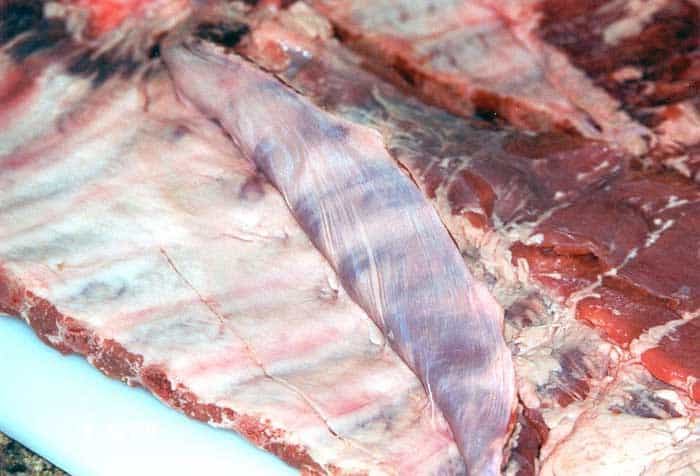
Because it’s leftover from the diaphragm, the exact amount of skirt can vary from cut to cut. Sometimes it’s just a narrow flap, and sometimes it can be much larger. In either case it needs to go.
Use a narrow knife to remove it. Lay the knife blade flat against the ribs and wedge it underneath the flap. Cut the skirt off completely, and trim any visible excess fat on this back section of the ribs in order to make the rack even.
Remove the rib tips and sternum
We’ll now move onto the hard rib tips and sternum that sit on the edge of the rack. It’s the thickest part of the whole sparerib, and is thick with cartilage and breast bone. It needs to go.
If you have trouble finding where the sternum and spare ribs meet, try folding the rack. Bones don’t bend, so if you see the meat folding then that should give you a good idea of where you need to get to work.
Cut along the length of the rack between the tips/sternum and main rack. This should allow you to remove it in one clean break.
Remove the membrane
This stage can be tough, so if you want to learn more check out my guide on how to remove membrane from ribs.
The membrane is a white skin that sits over the ribs. It can create a problem when cooking as it can prevent smoke from fully working its way into the meat, and can stop the fat and juices from rendering to help us form flavor.
While some people claim it doesn’t matter, I always prefer to remove it. I find that it allows BBQ rib rubs or marinades to penetrate the meat much better.
Use your knife to get under the corner of the membrane, and then using a paper towel try to get some purchase on the corner. Slowly pull the membrane away from the ribs, and try not to let it tear.
This can take some practice, but after a few attempts you’ll be a master in no time.
If the membrane does tear, don’t worry. You can continue to repeat the process, using your knife and paper towel to get purchase on the skin.
Remove excess fat
After removing the main parts of the ribs, there should now just be little pockets of fat and cartilage that need to be trimmed off.
Now that the membrane has gone, you should be able to see a few spots of leftover fat. These can be removed with your knife, or scraped off with a teaspoon.
Once you have done thus for the back side, flip the rack over and do the same for the front. Also trim off any stray bits of meat around the edges. These tend to burn quickly when cooked, so there’s no need to keep them.
The finished product
You should now be left with a perfectly trimmed cut of pork spare ribs, prepped for beautiful barbecue smoking.
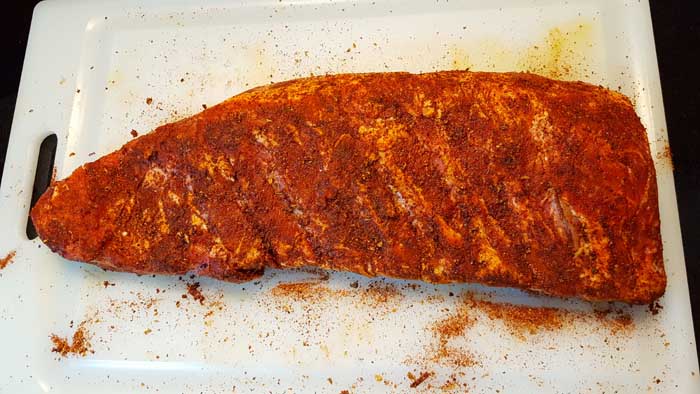
Apply your favorite rub, and get ready to cook them in line with your best BBQ ribs recipe. If you need some ideas here are some of our most popular recipes.
